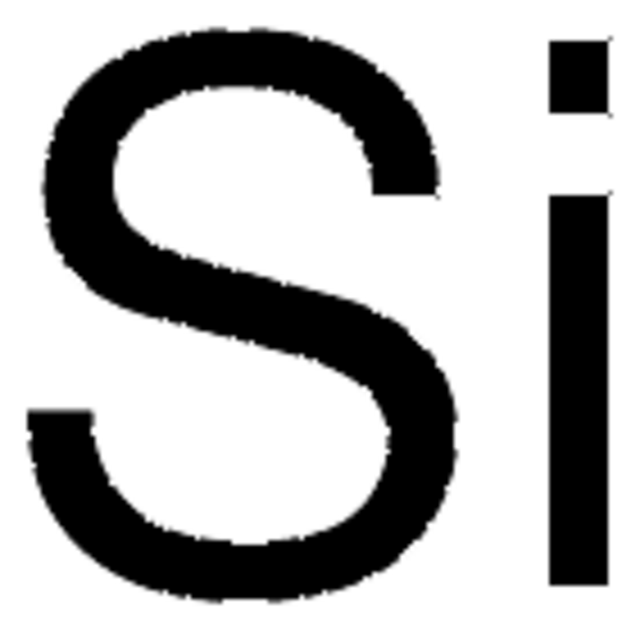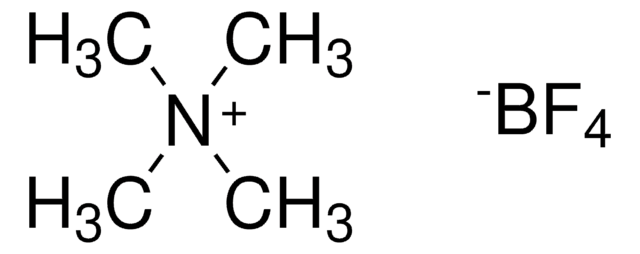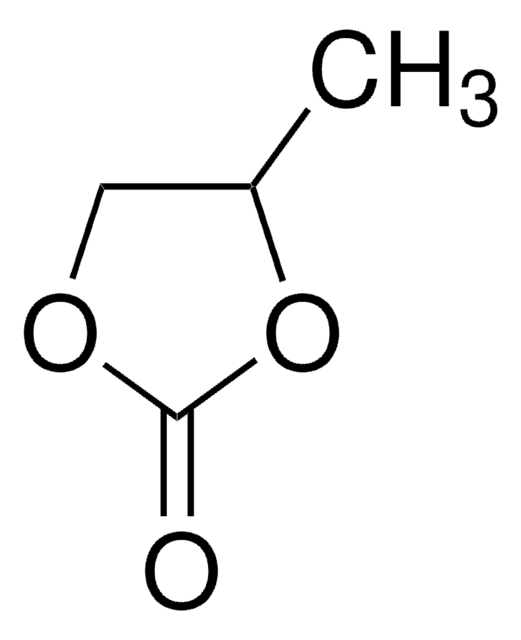86618
Tetraethylammonium tetrafluoroborate
for electrochemical analysis, ≥99.0%
About This Item
≥99.0%
Productos recomendados
grade
for electrochemical analysis
Quality Level
assay
≥99.0% (T)
≥99.0%
form
crystals
mp
≥300 °C (lit.)
solubility
acetonitrile: 0.1 g/mL, clear, colorless
SMILES string
F[B-](F)(F)F.CC[N+](CC)(CC)CC
InChI
1S/C8H20N.BF4/c1-5-9(6-2,7-3)8-4;2-1(3,4)5/h5-8H2,1-4H3;/q+1;-1
InChI key
XJRAKUDXACGCHA-UHFFFAOYSA-N
¿Está buscando productos similares? Visita Guía de comparación de productos
Categorías relacionadas
General description
Application
- High-rate electrochemical capacitors based on ordered mesoporous silicon carbide-derived carbon: This study discusses the use of Tetraethylammonium tetrafluoroborate in enhancing the performance of high-rate electrochemical capacitors, focusing on ordered mesoporous silicon carbide-derived carbon structures (Korenblit et al., 2010).
- Exactly matched pore size for the intercalation of electrolyte ions determined using the tunable swelling of graphite oxide in supercapacitor electrodes: The application of Tetraethylammonium tetrafluoroborate in electrolyte solutions for supercapacitors, demonstrating how it facilitates the exact matching of pore sizes in graphite oxide electrodes for optimal ion intercalation (Sun et al., 2018).
- A universal model for nanoporous carbon supercapacitors applicable to diverse pore regimes, carbon materials, and electrolytes: Describes a modeling approach that incorporates the characteristics of Tetraethylammonium tetrafluoroborate in various carbon materials and electrolytes, enhancing the understanding and design of supercapacitors (Huang et al., 2008).
- Sub-micrometer Novolac-Derived Carbon Beads for High Performance Supercapacitors and Redox Electrolyte Energy Storage: Research on utilizing Tetraethylammonium tetrafluoroborate in novel sub-micrometer novolac-derived carbon beads, which significantly boost the efficiency and energy storage capacity of supercapacitors (Krüner et al., 2016).
- Biomass-based Hierarchical Porous Carbon for Supercapacitors: Effect of Aqueous and Organic Electrolytes on the Electrochemical Performance: Explores the efficacy of Tetraethylammonium tetrafluoroborate in enhancing the electrochemical performance of biomass-derived hierarchical porous carbons in various electrolyte environments (Chen et al., 2019).
Other Notes
signalword
Warning
Hazard Classifications
Acute Tox. 4 Dermal - Acute Tox. 4 Inhalation - Acute Tox. 4 Oral - Eye Irrit. 2 - Skin Irrit. 2 - STOT SE 3
target_organs
Respiratory system
Storage Class
11 - Combustible Solids
wgk_germany
WGK 3
flash_point_f
Not applicable
flash_point_c
Not applicable
ppe
dust mask type N95 (US), Eyeshields, Gloves
Elija entre una de las versiones más recientes:
Certificados de análisis (COA)
¿No ve la versión correcta?
Si necesita una versión concreta, puede buscar un certificado específico por el número de lote.
¿Ya tiene este producto?
Encuentre la documentación para los productos que ha comprado recientemente en la Biblioteca de documentos.
Los clientes también vieron
Nuestro equipo de científicos tiene experiencia en todas las áreas de investigación: Ciencias de la vida, Ciencia de los materiales, Síntesis química, Cromatografía, Analítica y muchas otras.
Póngase en contacto con el Servicio técnico










